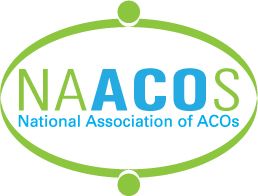
Responsibility for Addressing Health-Related Social Needs Stretches Across Public Health, Health Systems, and Plans

By prioritizing well-being, both the public and private sectors can come together in partnerships to address social needs and social determinants of health.
The structural mechanisms underlying health-related social needs are so vast and entrenched that public health agencies, health care delivery systems, and health plans will need to work in concert to enact upstream solutions, according to panelists speaking at the spring 2024 conference of the
Session moderator Debbie Welle-Powell, MPH, CEO of DWP Advisors and former chief population health officer at Essentia Health, began by defining key concepts: Social needs are the nonclinical needs that people identify as essential to their well-being, such as personal safety, food security, internet access, and literacy, whereas social determinants of health (SDOH) are conditions in one’s environment that affect a wide range of health states, outcomes, and risks. The work done in these spaces by accountable care organizations and others involved with care delivery is incredibly important, but also prompts the question of how it should be paid for, she explained.
The NAACOS meeting’s setting of Baltimore provided an example of what public health and health care can do for each other, according to Eric Schneider, MD, executive vice president for quality measurement and research at the National Committee for Quality Assurance (NCQA). More than 100 years ago, the city awarded Dr William Osler for his medical accomplishments, and he used this platform to prod the mayor into upgrading the sewer system to stop the spread of cholera. The focus of public health departments has evolved since then, and in recent decades their purview has included controlling outbreaks of communicable diseases like COVID-19 and HIV but also other dangers like opioids and gun violence, Schneider said.
Health plans and delivery systems are tasked with paying for and providing evidence-based services; managing health risks and financial risks; monitoring quality, access, and equity to guide improvement, and ensuring responsible stewardship of resources. NCQA has taken a role of measuring, accrediting, and recognizing plans based on their quality, with an increased focus on equity in recent years, according to Schneider.
“Improving health outcomes is really about not just the recognition of inequities, but also the recognition of the link between those disparities and the health-related social needs and health outcomes that they produce,” he said. Responding to this insight, NCQA has created a health equity accreditation program that recognizes health plans’ duty and ability to address inequities.
Delivering the health system and plan perspective was Adam Myers, MD, whose experience includes roles at Cleveland Clinic and Blue Cross Blue Shield Association. Compared with peer nations, Myers said, the US gets the least value out of its spending on health care because it spends downstream on the treatment of disease rather than upstream on the promotion of health. This approach and the structural nature of SDOH mean that partnerships among public health, health systems, and payers are necessary; no one segment can address SDOH on their own, but they can each do their part. Value-based payments can also incentivize care that is more aligned with the values of well-being and prevention, he said.
Myers highlighted the example of the Health, Hire, Invest strategy put in place by the Cleveland Clinic, which invested in legal aid, jobs trainings, and grocery partnerships, among other initiatives. He stressed the need to balance urgency, considering that these needs impact the daily lives and well-being of the community, with patience, as the changes will not all occur within the quarterly timeframes analyzed by health systems and payers.
“I’m hopeful and optimistic that we can get there, but it’s going to take entering into creative payment arrangements with providers, creative relationships across different sectors, and significant structural changes across our society in order to really address these because this is bigger than health care. This is about the health of people,” Myers concluded.
Sue Birch, MBA, director of the Washington State Health Care Authority, contributed her experience with the state’s largest health care purchaser, which has used a section 1115 waiver from CMS to create its Medicaid Transformation Project. This initiative allows the funding of behavioral health, housing aid, employment services, and re-entry efforts after incarceration, among others. In 9 regions across the state, community engagement groups are connecting individuals with community resources according to local needs.
A key to this effort is data, so Washington is investing in technological tools that go beyond a traditional electronic health record to encompass full case management and community information exchange. Another priority is embedding value-based payment models in contracts as part of the journey to move care off of the fee-for-service chassis, she said.
“The public health people are in the conversation as well as the social services folks, so really, it can be done, it will be done,” Birch summarized. “It's just going to be a long, hard slog.”
Taking the first step on addressing social needs and SDOH will come down to each stakeholder looking at their area of responsibility, the panelists agreed. For instance, the responsibility for screening starts with clinicians, who can then link patients to community-based organizations, Welle-Powell said.
“It’s all of our responsibility to think about this at the individual level, the clinician level, the practice level, the local state department level, the state itself, and even what we do here at NAACOS with CMS,” she concluded.
Newsletter
Stay ahead of policy, cost, and value—subscribe to AJMC for expert insights at the intersection of clinical care and health economics.







































